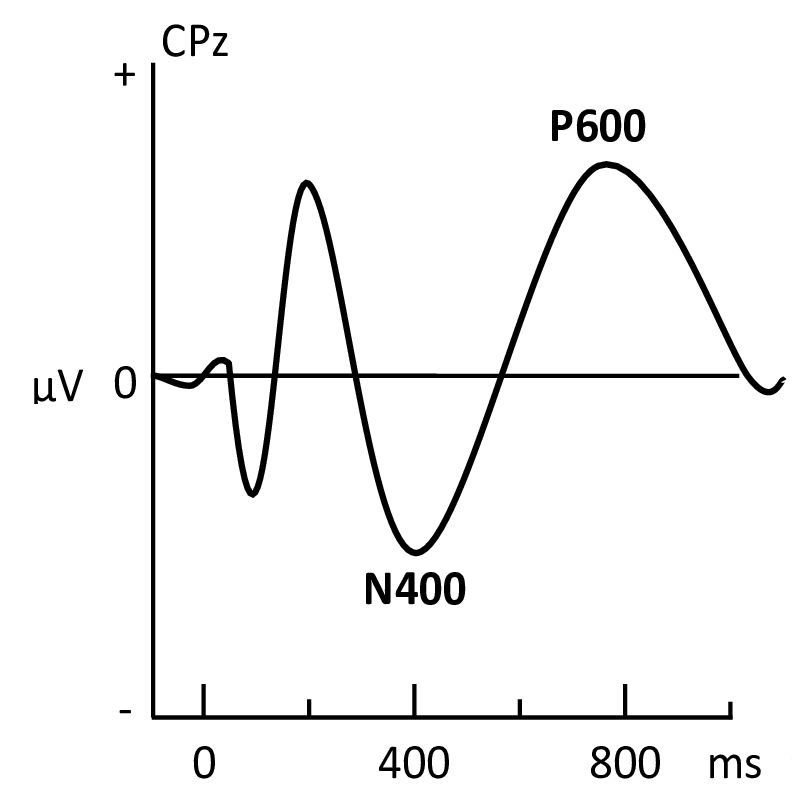Spelling Sensitivity in Russian Speakers Develops by Early Adolescence

Scientists at the RAS Institute of Higher Nervous Activity and Neurophysiology and HSE University have uncovered how the foundations of literacy develop in the brain. To achieve this, they compared error recognition processes across three age groups: children aged 8 to 10, early adolescents aged 11 to 14, and adults. The experiment revealed that a child's sensitivity to spelling errors first emerges in primary school and continues to develop well into the teenage years, at least until age 14. Before that age, children are less adept at recognising misspelled words compared to older teenagers and adults. The study findings have been published in Scientific Reports.
By the time they finish primary school, children's reading of high-frequency words becomes automated. Behavioural studies measuring parameters like reaction time and error rates show that children at this age can reliably distinguish between words and letter strings resembling words.
The event-related potential (ERP) method is a promising approach to examining the reading process in neurophysiological research. Event-related potentials are the brain's electrophysiological responses to perceptual events (such as specific sensations), cognitive events (like decision-making), or motor events (such as pressing a button).

The ERP method allows for assessing the brain's response to verbal stimuli and identifying time intervals—components within the ERP—associated with their processing. In primary school-age children, the ERPs in response to words and strings of non-letter symbols differ at 200 ms after presentation, but distinctions between words and meaningless strings of actual letters are detected much later, only after 400 ms. This indicates that such stimuli are more challenging for young children to process.
However, sensitivity to spelling patterns is not limited to the ability to distinguish words from meaningless letter sequences but also involves more complex skills related to recognizing spelling errors. The issue is that the neural bases underlying the development of orthographic sensitivity remain poorly understood.
Scientists at the RAS Institute of Higher Nervous Activity and Neurophysiology and the Centre for Cognition and Decision Making of the HSE Institute for Cognitive Neuroscience used electroencephalography (EEG) to investigate event-related potentials associated with spelling error recognition. The study involved children aged 8 to 10, early adolescents aged 11 to 14, and adults aged 18 to 39, all of them native speakers of Russian. None of the subjects experienced spelling difficulties.
The subjects were presented with words on a screen, some of which were spelled correctly while others were misspelled. The task was to determine whether the word on the screen was spelled correctly.
The experiment showed that all the groups successfully identified both correctly spelled and misspelled words. The average error rate, even among children aged 8 to 10, did not exceed 14%, although children had more incorrect answers and longer reaction times compared to early adolescents and adults.
Early adolescents and adults showed similar, though not identical, behavioural results. The response time to both types of stimuli and the percentage of erroneous responses to correctly spelled words did not differ between these groups. However, early adolescents were worse than adults at recognising misspelled words.
In adult participants, differences in ERPs between correctly and incorrectly spelled words were observed in two distinct time windows. This indicates that the recognition of spelling correctness by adults involves two ERP components: an early component around 400 ms and a later one of up to 600 ms, probably related to re-checking the spelling for errors.
In children aged 8 to 10, there were no differences in ERPs between correctly spelled and misspelled words. According to the researchers, this suggests that the ability to quickly recognise correct spelling is just beginning to develop at this age. Interestingly, in early adolescents, spelling recognition was reflected only at the later stage corresponding to the 600 ms component, ie they did not exhibit early differences related to automated spelling recognition.
The experiment revealed that a child's orthographic sensitivity first emerges in primary school and continues to develop well into the teenage years, at least until age 14. These findings contribute to our understanding of the neurophysiological mechanisms underlying the mastery of Russian spelling and how these mechanisms evolve with age.

Leading Research Fellow, Centre for Cognition and Decision Making, Institute for Cognitive Neuroscience
In our study, adults and adolescents did not differ in their reaction times to any of the stimuli: both groups recognized correctly and incorrectly spelled words at similar speeds. This suggests that they likely employed similar reading and spelling recognition strategies. Nevertheless, the percentage of misidentified misspelled words was higher in early adolescents compared to adults, suggesting that spelling sensitivity is still developing at this age.
See also:
Scientists Uncover Why Consumers Are Reluctant to Pay for Sugar-Free Products
Researchers at the HSE Institute for Cognitive Neuroscience have investigated how 'sugar-free' labelling affects consumers’ willingness to pay for such products. It was found that the label has little impact on the products’ appeal due to a trade-off between sweetness and healthiness: on the one hand, the label can deter consumers by implying an inferior taste, while on the other, it signals potential health benefits. The study findings have been published in Frontiers in Nutrition.
HSE Psycholinguists Launch Digital Tool to Spot Dyslexia in Children
Specialists from HSE University's Centre for Language and Brain have introduced LexiMetr, a new digital tool for diagnosing dyslexia in primary school students. This is the first standardised application in Russia that enables fast and reliable assessment of children’s reading skills to identify dyslexia or the risk of developing it. The application is available on the RuStore platform and runs on Android tablets.
Physicists Propose New Mechanism to Enhance Superconductivity with 'Quantum Glue'
A team of researchers, including scientists from HSE MIEM, has demonstrated that defects in a material can enhance, rather than hinder, superconductivity. This occurs through interaction between defective and cleaner regions, which creates a 'quantum glue'—a uniform component that binds distinct superconducting regions into a single network. Calculations confirm that this mechanism could aid in developing superconductors that operate at higher temperatures. The study has been published in Communications Physics.
Neural Network Trained to Predict Crises in Russian Stock Market
Economists from HSE University have developed a neural network model that can predict the onset of a short-term stock market crisis with over 83% accuracy, one day in advance. The model performs well even on complex, imbalanced data and incorporates not only economic indicators but also investor sentiment. The paper by Tamara Teplova, Maksim Fayzulin, and Aleksei Kurkin from the Centre for Financial Research and Data Analytics at the HSE Faculty of Economic Sciences has been published in Socio-Economic Planning Sciences.
Larger Groups of Students Use AI More Effectively in Learning
Researchers at the Institute of Education and the Faculty of Economic Sciences at HSE University have studied what factors determine the success of student group projects when they are completed with the help of artificial intelligence (AI). Their findings suggest that, in addition to the knowledge level of the team members, the size of the group also plays a significant role—the larger it is, the more efficient the process becomes. The study was published in Innovations in Education and Teaching International.
New Models for Studying Diseases: From Petri Dishes to Organs-on-a-Chip
Biologists from HSE University, in collaboration with researchers from the Kulakov National Medical Research Centre for Obstetrics, Gynecology, and Perinatology, have used advanced microfluidic technologies to study preeclampsia—one of the most dangerous pregnancy complications, posing serious risks to the life and health of both mother and child. In a paper published in BioChip Journal, the researchers review modern cellular models—including advanced placenta-on-a-chip technologies—that offer deeper insights into the mechanisms of the disorder and support the development of effective treatments.
Using Two Cryptocurrencies Enhances Volatility Forecasting
Researchers from the HSE Faculty of Economic Sciences have found that Bitcoin price volatility can be effectively predicted using Ethereum, the second-most popular cryptocurrency. Incorporating Ethereum into a predictive model reduces the forecast error to 23%, outperforming neural networks and other complex algorithms. The article has been published in Applied Econometrics.
Administrative Staff Are Crucial to University Efficiency—But Only in Teaching-Oriented Institutions
An international team of researchers, including scholars from HSE University, has analysed how the number of non-academic staff affects a university’s performance. The study found that the outcome depends on the institution’s profile: in research universities, the share of administrative and support staff has no effect on efficiency, whereas in teaching-oriented universities, there is a positive correlation. The findings have been published in Applied Economics.
Physicists at HSE University Reveal How Vortices Behave in Two-Dimensional Turbulence
Researchers from the Landau Institute for Theoretical Physics of the Russian Academy of Sciences and the HSE University's Faculty of Physics have discovered how external forces affect the behaviour of turbulent flows. The scientists showed that even a small external torque can stabilise the system and extend the lifetime of large vortices. These findings may improve the accuracy of models of atmospheric and oceanic circulation. The paper has been published in Physics of Fluids.
Solvent Instead of Toxic Reagents: Chemists Develop Environmentally Friendly Method for Synthesising Aniline Derivatives
An international team of researchers, including chemists from HSE University and the A.N. Nesmeyanov Institute of Organoelement Compounds of the Russian Academy of Sciences (INEOS RAS), has developed a new method for synthesising aniline derivatives—compounds widely used in the production of medicines, dyes, and electronic materials. Instead of relying on toxic and expensive reagents, they proposed using tetrahydrofuran, which can be derived from renewable raw materials. The reaction was carried out in the presence of readily available cobalt salts and syngas. This approach reduces hazardous waste and simplifies the production process, making it more environmentally friendly. The study has been published in ChemSusChem.


